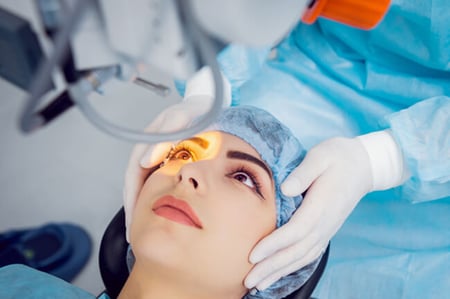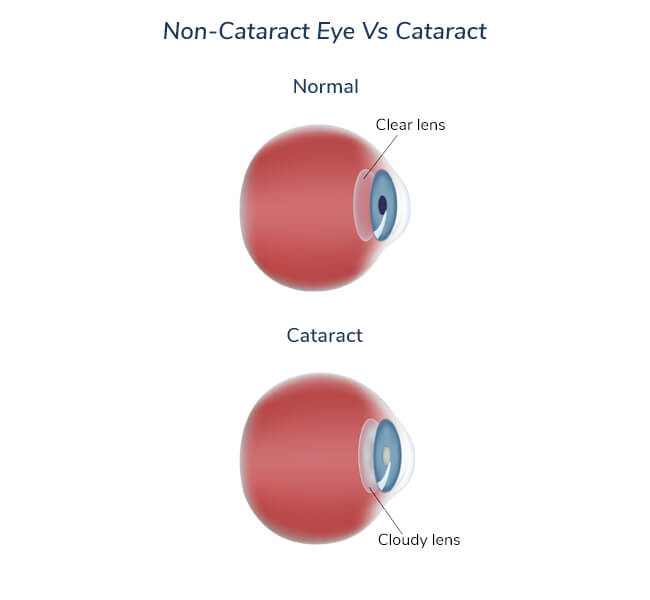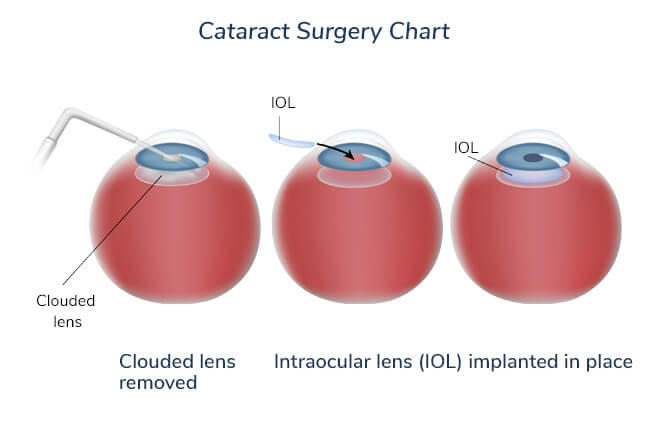Cataract Surgery
Schedule an Appointment
Call 713-668-6828
Are You a Candidate for Cataract Surgery?
If you or a family member are seeking a diagnosis for suspected cataracts, or if it has already been determined that you are a candidate for cataract removal, Houston Eye Associates can help you take the next steps. Our skilled team of Cataract Surgeons has the experience and the most up-to-date technology to help our patients reverse the symptoms and vision loss associated with cataracts. We will also walk you through all of the Premium Lens Implant options and help you choose the right lens for your situation.

Choosing the Cataract Surgeon that is Right for You
Because of the many multi-focal intraocular lens implants available, including Premium Lens Implants, and your individual vision correction needs, it’s important to discuss all of your options with a qualified eye surgeon. We invite you to make an appointment with one of our dedicated ophthalmologists at Houston Eye Associates. As with all elective eye surgery procedures, you should ask your ophthalmologist for a complete list of the risks and complications associated with Cataract Surgery, as well as the potential benefits and rewards that come with taking this important step.
Are You a Candidate for Cataract Surgery?
Take our Cataract self-test to find out!
What Are Cataracts?
A cataract is a loss of transparency, or clouding, of the normally clear lens of the eye. As one ages, chemical changes occur in the lens that makes it less transparent. The loss of transparency may be so mild vision is hardly affected or so severe that no shapes or movements are seen, only light and dark. When the lens gets cloudy enough to obstruct vision to any significant degree, it is called a cataract. Glasses or contact lenses cannot sharpen your vision if a cataract is present.
The most common cause of cataracts is aging. Other causes include trauma, medications such as steroids, systemic diseases such as diabetes, and prolonged exposure to ultraviolet light. Occasionally, babies are born with a cataract.
Reducing the amount of ultraviolet light exposure by wearing a wide-brim hat and sunglasses may reduce your risk for developing a cataract but once developed there is no cure except to have the cataract surgically removed. Outpatient surgical procedures can remove the cataract through either a small incision (phacoemulsification) or a large incision (extracapsular extraction). The time to have the surgical procedure is when your vision is bad enough that it interferes with your lifestyle.

Cataract surgery is a very successful operation. One and a half million people have this procedure every year and 95% have a successful result. As with any surgical procedure, complications can occur during or after surgery and some are severe enough to limit vision. But in most cases, vision, as well as the quality of life, improves.

Cataract Symptoms
Your eye works a lot like a camera. Light rays focus through your lens on the retina, a layer of light-sensitive cells at the back of the eye. Similar to the film, the retina allows the image to be seen by the brain. But over time the lens can become cloudy and prevent light rays from passing clearly through the lens. This cloudy lens is called a cataract.
The typical symptom of cataract formation is a slow, progressive, and painless decrease in vision. Other changes include blurring of vision; glare, particularly at night; frequent eyeglass prescription change; a decrease in color intensity; a yellowing of images; and in rare cases, double vision.
Ironically as the lens gets harder, farsighted or hyperopic people experience improved distance vision and are less dependent on glasses. However, nearsighted or myopic people become more nearsighted or myopic, causing distance vision to be worse. Some types of cataracts affect distance vision more than reading vision. Others affect reading vision more than distance vision.
What Happens During Cataract Surgery?
During cataract surgery, a small incision is made and the lens material is removed by using an ultrasonic probe. The man-made intraocular lens material cannot be implanted until the hardened cataract is removed. Once the eye has been cleaned, your Cataract Surgeon will determine whether or not the proper dilation of the pupil has been achieved. After this, a 3-millimeter micro-incision is made at the junction of the white part of the eye known as the sclera and the cornea. An ultrasonic probe is inserted into this micro-incision. The cataract is then pulverized by the ultrasonic probe and your eye surgeon then suctions out the cataract material so that the cataract can be removed.

Following the cataract removal, the ophthalmologist is then ready to implant a man-made intraocular lens. The other option is a premium lens that can reduce the need for glasses after surgery. At Houston Eye Associates, our Cataract Surgeons will help you choose the lens that is best suited for you and will make sure that you have every option available.

